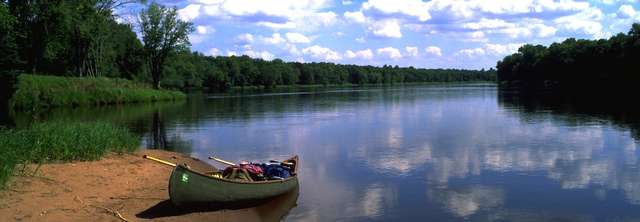Help Support Strong River Corridor Rules
Friends of the Mississippi River is collaborating with other organizations to develop detailed written and oral testimony for the administrative law judge on the new land-use and development rules in the Mississippi River Corridor Critical Area.
We also want to make sure the voices of individuals and families who care about the river continue to be heard.
One way individuals and families can make an impact is by providing real-world examples of the places along the river that are special to them and in need of protection. Such examples can help drive home and illustrate why these new rules are needed and reasonable, a vital consideration for the judge.
If you'd like to help move the rules forward, please consider creating a testimony or submitting comments to the administrative law judge along these lines before the final review deadline, July 6, 2016, 4:30 p.m. (See how to comment below.)
The basics
• Keep your comments focused. Consider emphasizing one particular location that you visit regularly.
• Frame your comments by stating why the rules are needed and reasonable.
• Identify the specific things you value about the river, how they might be threatened, and how the rules will protect them. For example, you could share your love of birds, explain your concern that habitat loss threatens bird species diversity, and point out that protecting bluff and shoreline vegetation will support better bird survival rates.
• Include photos that compare examples of what you do and do not want to see on the river, and explain why these goals for the river will benefit the broader community.
Talking points
Protecting Scenic Views
- The Mississippi River is known across the globe for its world-class scenery, and some of the most dramatic landscapes are right here in our local national park. These iconic views and viewsheds are public resources that must be protected for current and future generations.
- The draft rules are needed and reasonable because they protect scenic views that provide a sense of place for local residents, attract new residents and businesses to the region, and encourage tourism.
- Because they are unique and highly significant, special protection is needed for views surrounding the Mississippi River Gorge, Fort Snelling and the Missisissippi and Minnesota river confluence. In these areas, it is unreasonable to allow building heights to exceed 50 feet, which is the height of a mature tree.
Protecting Shorelines and Bluffs
- The bluffs and shorelines of the Mississippi River are highly significant and sensitive resources. They provide critical habitat that supports a diversity of plants and wildlife, including an international migratory flyway.
- Bluffs and shorelines are subject to erosion, which can lead to poor water quality and danger to human life and property.
- Structure setbacks from shorelines and bluffs are needed and reasonable, in order to prevent erosion and habitat degradation.
- The draft rules are needed because they provide clear definitions of bluff, bluff line and other associated features. Defining bluffs as 18% slope or greater is reasonable because that is the number in the original Executive Order and many existing local ordinances.
Open Space Dedication
- Dedication of open space within the corridor is needed to ensure protection of the river’s biological and ecological functions, preservation of its natural and scenic character, and enhancement of public river access and trails.
- Conservation design, or clustering development away from natural features in order to preserve them, is a good strategy for ensuring that limited wildlife habitat along the river is preserved. This is especially important in undeveloped areas of the corridor where the proposed rule requires open space dedication of 50% of river-adjacent parcels.
- The 10-acre threshold for applying open space dedication requirements to river-adjacent land is too high. Preserving or restoring open space right along the river should be maximized as it will protect against shoreline erosion and water quality degradation, and provide habitat for both terrestrial and aquatic life. Many urban areas along the river will be redeveloped in the next 20 years, and more public access to the river will be needed to support growing numbers of urban residents and visitors.
How to comment
The comment period began April 11. Written comments are due by Wednesday July 6, 2016 at 4:30 p.m. sharp.
The best way to submit letters and supporting materials for this rulemaking is in writing. Send your comments by U.S. Mail or fax:
- Administrative Law Judge Eric L. Lipman
Office of Administrative Hearings
600 North Robert Street
PO Box 64620
St. Paul, MN 55164-0620
Fax: 651-539-0310
You may also submit comments online through the Office of Administrative Hearing's e-Comment system. Please note, you will not be able to upload letters, attachments, or other documents through this system. The Office of Administrative Hearings is not set up to accept emails.
Become a River Protector
If you'd like to stay informed about FMR's official comments, or would like assistance crafting a personal testimony, please contact Policy Advocate Alicia Uzarek, auzarek@fmr.org, or sign up to be a River Protector and be sure to click "I will advocate for the vitality of the Twin Cities river corridor, our national park."
